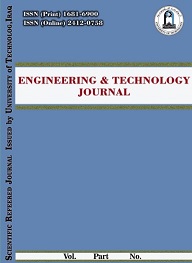Abstract
In this paper some results from previous experimental test are adopted
and analyzed using a nonlinear three-dimensional finite element ANSYS
computer program (v.11) to investigate the effect of the presence of
horizontal construction joints (H.C.J.) on the behavior of reinforced
concrete (RC) beams.
Three beams having one, two and three (H.C.J.) that divide the beam into equal
parts, as well as one reference beam without a joint were analyzed. The results
obtained from the finite element analysis show very good agreement with the
results obtained from the previous experimental test. The maximum differences in
ultimate loads were about (8.2-10.4)% for all types of tested beams. The presence
of one, two and three (H.C.J.) in RC beams under flexure gave a decrease in the
value of the cracking load such that Pcr was (97%), (85%) and (80%) of (Bref).
The respective ultimate load capacity Pu was (96%), (89%) and (84%) compared
to (Bref)
and analyzed using a nonlinear three-dimensional finite element ANSYS
computer program (v.11) to investigate the effect of the presence of
horizontal construction joints (H.C.J.) on the behavior of reinforced
concrete (RC) beams.
Three beams having one, two and three (H.C.J.) that divide the beam into equal
parts, as well as one reference beam without a joint were analyzed. The results
obtained from the finite element analysis show very good agreement with the
results obtained from the previous experimental test. The maximum differences in
ultimate loads were about (8.2-10.4)% for all types of tested beams. The presence
of one, two and three (H.C.J.) in RC beams under flexure gave a decrease in the
value of the cracking load such that Pcr was (97%), (85%) and (80%) of (Bref).
The respective ultimate load capacity Pu was (96%), (89%) and (84%) compared
to (Bref)
